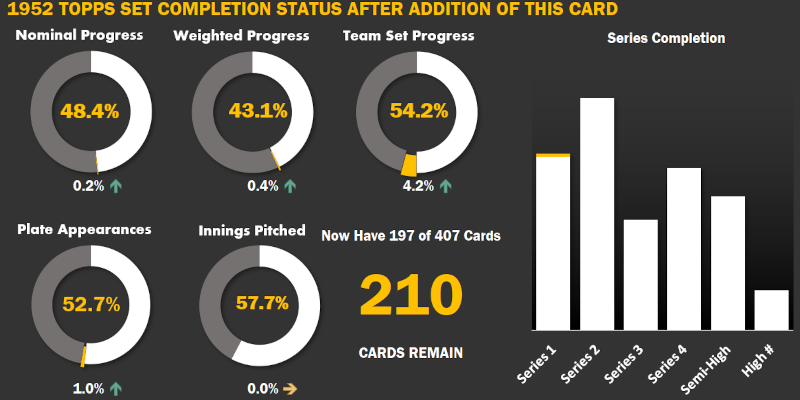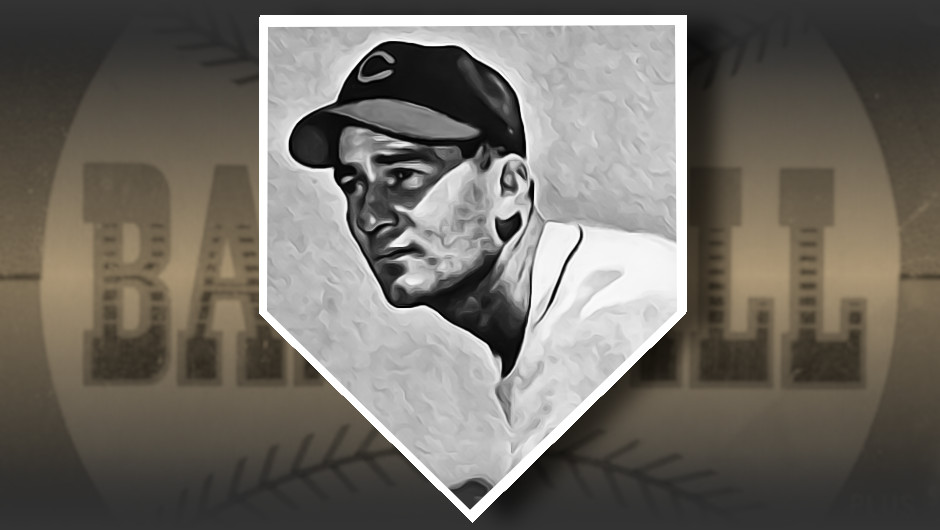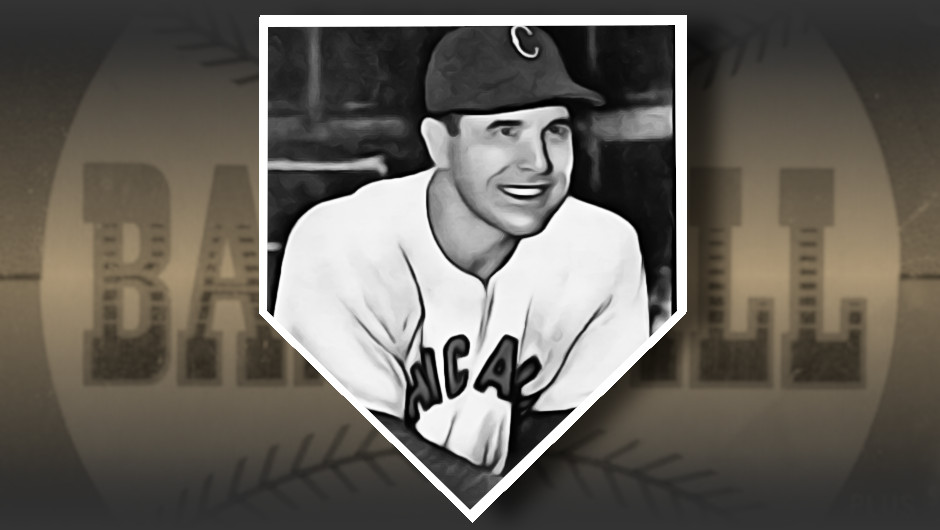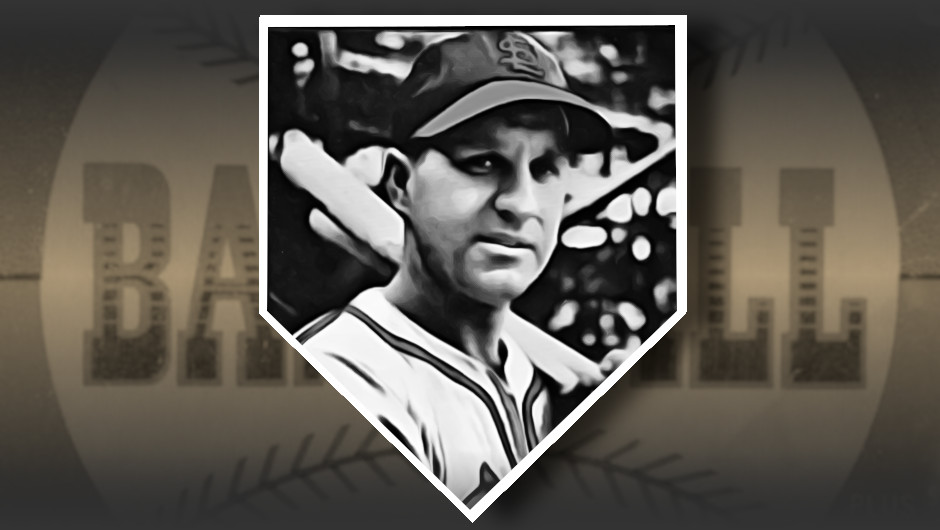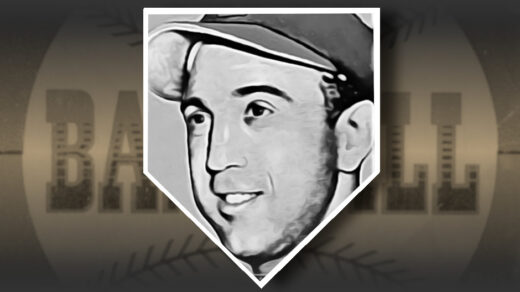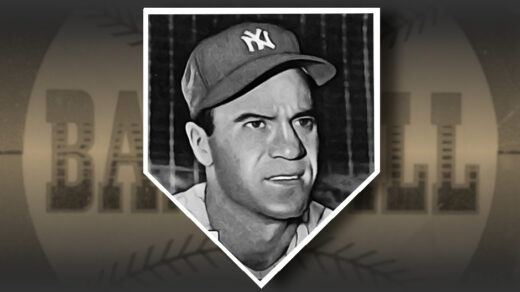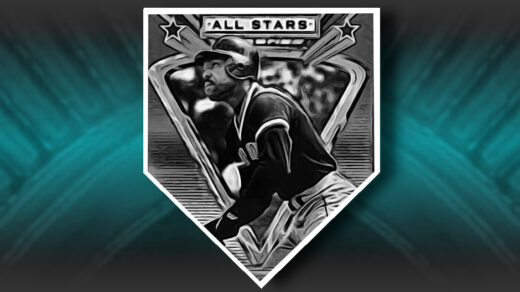The New York Yankees are synonymous with many things: Championships. Big payrolls. Pinstripes. Limited Sideburns. As one of the founding members of the American League, the team has wholeheartedly embraced a reverence for tradition. When they can create a tradition around nostalgia for past Yankees teams they get even more enthusiastic.
One of these traditions is Old Timers’ Day, when a specific game is singled out for festivities honoring past fan favorites. The event is usually accompanied by an exhibition game involving the honorees and has been an annual tradition at Yankee Stadium since 1947. The day initially featured greats from all teams, with Cy Young and Ty Cobb on the field in uniform one last time to offer support to an onlooking Babe Ruth. Eventually the event became more focused on the Yankees with only those who donned pinstripes being invited to play.
The whole production is one big love-fest for New Yorkers of the past. Last year’s ceremonies included a majority of the 1998 roster, along with Ron Guidry, Hideki Matsui, and others. This year’s edition is scheduled to take place with the Colorado Rockies come to town on August 24. Previous iterations included many recurring faces. Joe DiMaggio almost clocked 50 appearances. Whitey Ford and Mickey Mantle were regulars for decades, and Phil Rizzuto made recurring treks from his perch in the broadcast booth.
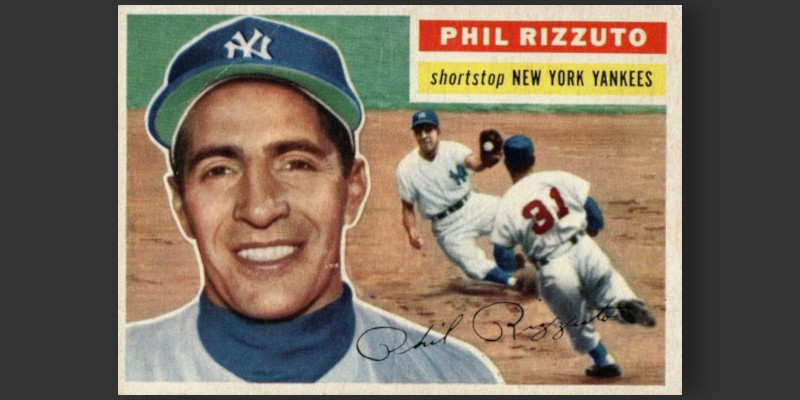
It was at the tenth annual Old Timers’ Day that the Yankees showed another long held tradition: Being absolutely ruthless with personnel decisions. As the team prepared for that evening’s game, general manager George Weiss pulled Phil Rizzuto aside to discuss potential roster changes in front of a likely postseason run. Minutes earlier the Yankees had signed Enos Slaughter to provide extra power at the plate. The longest tenured player on the team, Rizzuto joined Weiss in his office and began making suggestions on who was expendable to make room for the 40 year-old veteran. After Weiss waived off each of his names, the now 40 year-old Rizzuto realized the name to be cut was his own.
He left the stadium in shock, no longer a Yankee as that night’s game got underway. Those with box scores in hand could have seen his playing days should have ended prior to this point, but Rizzuto had viewed his faltering performance as something more akin to a slump than permanent decline. His batting average was only .231 in the current season, down from .259 in parttime 1955 play. The ’55 figure may have been a bit of an aberration as he hit .195 in much heavier use throughout 1954. Management had already lost confidence in Rizzuto, playing him sparingly after that 1954 season and typically pulling him from the games he did start after 1 or 2 trips to the plate.
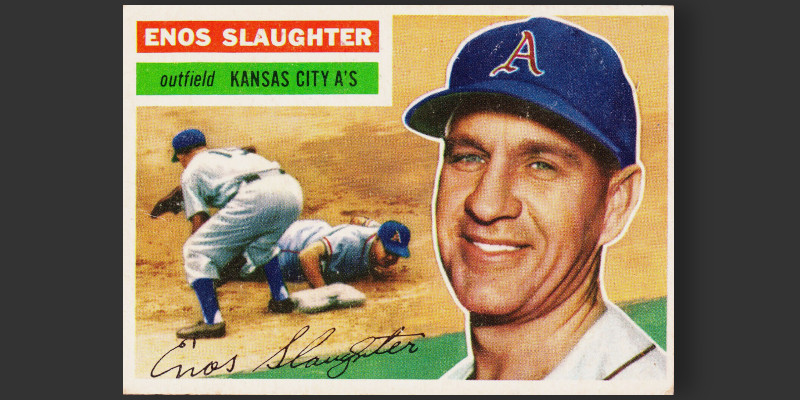
Slaughter, for his part, debuted the day after the Old Timers’ firing and promptly turned in a 2 for 4 performance at the plate. The former hitting machine, now well into his own decline, finished out the last month of the season playing at roughly replacement value. However, his presence on the team proved decisive when the Yankees faced off against the Brooklyn Dodgers in the ’56 World Series. In danger of falling behind 0-3 in the series, New York came from behind to win Game 3 on Slaughter’s only Yankee home run of the year. New York would rally around that victory to take the title in 7 games.
World Series heroics were something of a specialty for Slaughter. He scored the winning run of Game 7 in 1946, running from first to home on weak double from a .237 hitter. In 1942 he finished second in NL MVP voting after leading the St. Louis Cardinals to victory the World Series (over the Yankees). He played roles in getting New York back into the World Series in 1957 and 1958 as well.
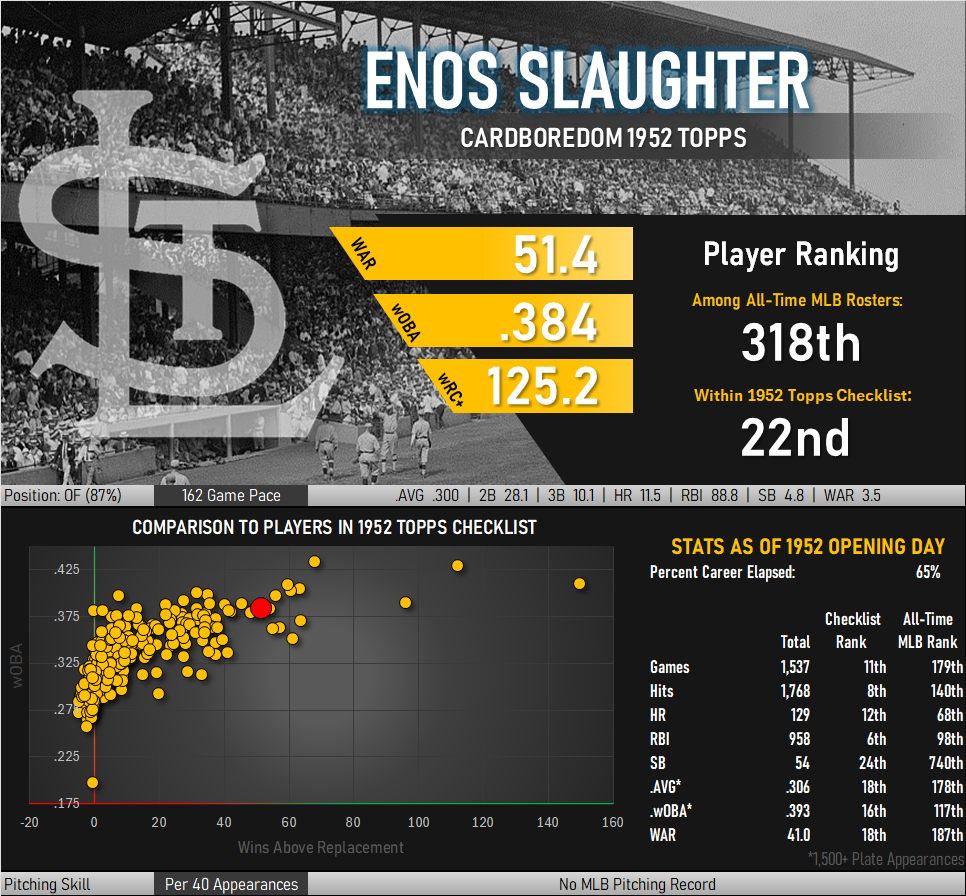
Not Every ’52 Topps Card Shows Its Age
Most examples of 1952 Topps baseball cards in my collection are in pretty rough shape. Few corners exhibit anything resembling a right angle and a handful of cards are literally held together by tape. That goes with the territory when attempting to build a 70 year-old set from an iconic issue on a budget. Better copies are usually available, but I tend to eventually find a sweet spot where I can get two or three decent but well-loved examples for the price of one technically better card.
Sometimes I find the cost difference between grades to be almost negligible. In those cases, I find the experience to be akin to picking up a low grade card and then being asked if I want to upgrade for just a couple bucks more. Like getting extra french fries at McDonald’s for just $0.39, the offer is too good to pass up.
This is how I came to cross off Enos Slaughter’s name from my set building checklist. As one of the less popular Hall of Famers in the set, low grade examples of the card can be found for $10-$20. A badly mauled ’52 Slaughter even sold for $4 on eBay this past weekend. The card doesn’t begin to regularly crack the $50 mark until well into the higher grades, making sharp ones like this affordable for the price of ordering a pizza. I think that cardiologists and I agree that if I hope to one day be an old timer, trading takeout pizza for cards is a good move.
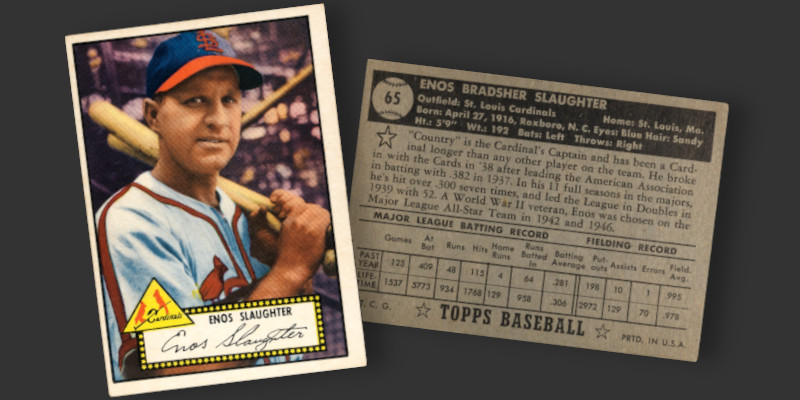
This card can be set apart from many others in the set. The coloring is fantastic, from the design elements of Slaughter’s uniform in the foreground to the batting cage and grandstands in the background. The majority of cards featuring stadium backdrops have very little in the way of color with many only providing the vaguest sepia treatment. Not so on this one. Slaughter was the Cardinals’ biggest name in the checklist and Topps wanted to make his card look good.
